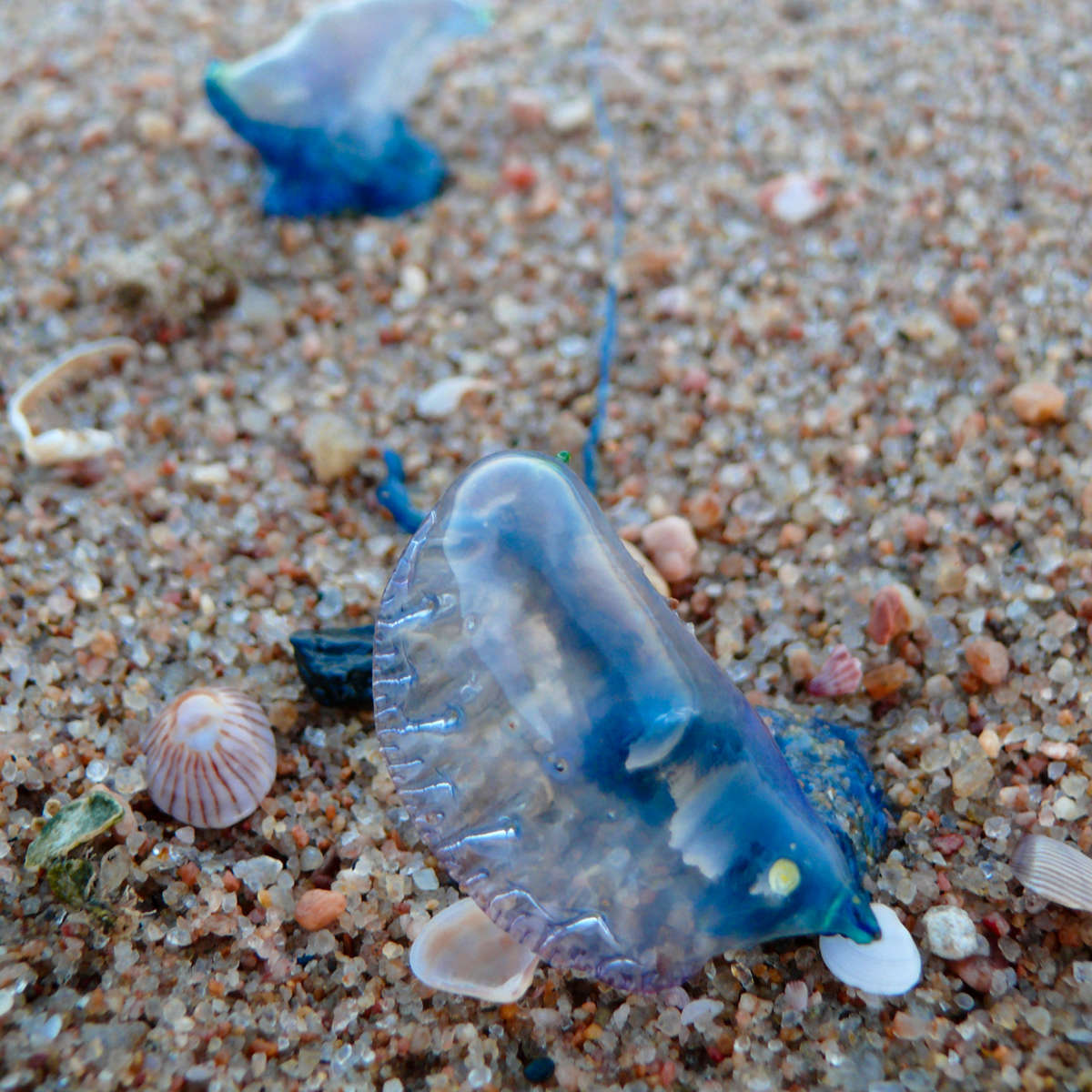
Bluebottle jellyfish.
Image: Robmania
The Bluebottle jellyfish (Physalia utriculus) is a regular visitor to Tasmanian waters, especially the east coast. At times, we also see them around the southern end of the Derwent Estuary.
Bluebottles belong to the siphonophores, which are a group of colonial jellyfish. Rather than being a single organism, siphonophores are made up of multiple colony members, called persons or zooids, which all have different purposes, including feeding, reproduction and stinging.
Out in the open ocean, where bluebottles live, they drift along according to the winds. They have either right-handed or left-handed crests (sails), so the wind will grab some and not others depending on the wind's direction. When there is persistent onshore wind they can wash up on our beaches.
As they drift downwind, their long tentacles float beneath them. Muscles in the tentacles contract when they touch any prey. The tentacles then retract and pull the prey up into range of the digestive polyps. Their food consists mostly of small crustaceans and other members of surface plankton.
While the tentacles can give swimmers a nasty sting, they are not dangerous.
How to treat a bluebottle sting
- Do not rub the sting area.
- Remove any adhering tentacles.
- Rinse the area really well with seawater (not freshwater) to get rid of the stinging cells.
- Place the sting area in hot water for 20 minutes (e.g. hot shower, as hot as can be tolerated).
- If the pain is unrelieved by heat, or if hot water is not available, apply cold packs or ice in a dry plastic bag.
- Seek medical aid if symptoms persist.
Further information
- Bluebottle jellyfish information from the Australian Museum.
- Siphonophora information from the University of Tasmania.
- Video from OceanFit regarding treatment.
